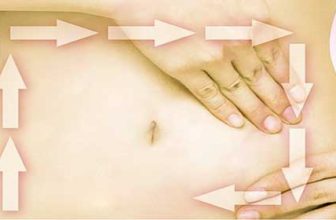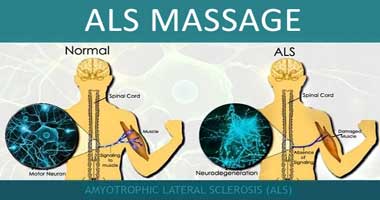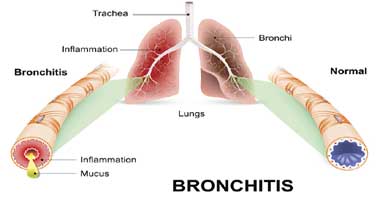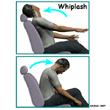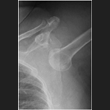
 Joint Dislocation is the complete dissociation of the articulating surfaces of a joint. While a Subluxation is when the articulating surfaces of a joint remain in partial contact with each other.
Joint Dislocation is the complete dissociation of the articulating surfaces of a joint. While a Subluxation is when the articulating surfaces of a joint remain in partial contact with each other.
- The Glenohumeral joint or the shoulder joint is the most frequently dislocated in the body. Because only a portion of the head of the humerus comes into contact with the shallow glenoid fossa. The GH joint relies on ligament and mm support
- Other joints prone to dislocation : AC joint, metacarpals, interphalangeals
Joint Dislocation Massage Therapy Treatment:
ACUTE Joint Dilocation Massage:
- Limb elevated, cool hydro
- Proximal limb treated with MLD ( Manual Lymphatic Drainage), effleurage, pettrisage, GTO
- Do not reduce protective muscle spasm in any muscle that is crossing the affected joint
- Distally: some mild muscle squeezing, stroking
- Mild range Passive ROM to proximal joints — only on joints whose muscles do not cross the dislocated joint –unrelated to joint affected
EARLY SUBACUTE Joint Dislocation Massage:
- Proximal limb treated with MLD, effleurage, petrissage, GTO, O&I (Origin & Insertion), kneading, c-scooping
- Do not significantly reduce protective muscle spasm
- Trigger Points in muscles that refer to injured limb and injury site itself are treated
- On site work now indicated: vibrations, stroking, gentle fingertip kneading to muscles crossing affected joint
- Mid range Passive ROM to proximal joints— only on joints whose muscles do not cross the dislocated joints
- Distally: muscle squeezing, stroking
LATE SUBACUTE Joint Dislocation Massage:
- MLD if needed
- Proximal limb treated
- Trigger points that refer to injured limb and dislocated site treated.
- If treating trigger points in a muscle that is crossing the affected joint, follow with repetitive petrissage to flush circulation
- On-site work focuses on decreased adhesions surrounding injury. Muscle stripping, gentle frictions, followed by partial stretch and ice.
- Joint play- only in ranges in which injury DID NOT occur— this increases ROM and prevents capsular contractures.
- Active Assisted ROM and Passive Relaxed ROM to affected joint, avoiding injured range
- Effeurage and Petrissage distally to maintain tissue health.
CHRONIC Joint Dislocation Massage:
- If connective tissue restrictions have formed a pocket of chronic edema, fascial spreading is used to reduce it. Follow with contrast hydro treatment to flush edema
- Proximal limb treatment.
- Treat Trigger Points that refer to injured site
- Focus on decreasing remaining adhesions which are restricting joint capsule and tendons. Begin with kneading and Deep muscle stripping, follow with cross fiber frictions to adhesions.
- Joint play to proximal, distal and affected joint, avoid range in which injury occur.
- Distal limb treated with effleurage, petrissage
Contraindications for Joint Dislocation Massage Therapy Treatment:
- Testing past Active Free ROM of distal and proximal joints in acute and subacute stages are contraindicated
- In acute and subacute, removing protective muscle spasm is contraindicated
- Onsite work is contraindicated during the acute stage
- No distal technique in acute and subacute
- If joint is unstable, do not place in position in which injury occurred.
- Joint play if joint is unstable is contraindicated
- Frictions with anti-inflammatories is contraindicated
- Heavy hydro applications in acute/subacute stage is contraindicated( eg. heavy hydroculator..no weight on the injured joint)
- If casted, no hot hydro immediately proximal to cast to avoid congestion beneath
- Ensure that majority of strength is regained in the muscles crossing the joint before attempting to restore range in the direction the dislocation occurred.
Specific Joint Dislocations:
Dislocated Shoulder
- aka Glenohumeral Joint Dislocation
o Most common dislocation is anterior aka Subcoracoid. Anterior dislocation caused by excessive abduction and external rotation of humerus. Anterior Portion of joint capsule tears may cause axillary nerve injury.
o Posterior dislocation occurs with flexion, adduction, internal rotation of humerus ( ex. fall forward into flexed elbow)
Dislocated Knee
- Patella Dislocation
o usually dislocates in a lateral direction, occurs when tibia and foot externally rotate when knee is flexed
- Lunate Dislocation
o Fall on outstretched hand forcing wrist into hyperextension. Radius forces lunate in a palmar direction.
- Elbow Joint Dislocation
– Elbow dislocation usually accompanied by fracture (may be radius or humerus). Fall on outstretched hand or Motor Vehicle Accident. Ulna and radius displaced posteriorly. May cause damage to brachial artery, median and ulnar nerve.
– Pulled Elbow— a type of elbow dislocation. Happens when lifting babies with their hand. Radius get past (pulls away from) annular ligament.
- Hip Joint Dislocation
Uncommon, may happen in Motor Vehicle Accident with direct impact on the knee. Femur usually forced posteriorly. May cause compression of sciatic nerve.
Signs and Symptoms for Dislocation:
Acute Joint Dislocation: Dislocation Massage Therapy Dislocation Massage
- Complete rupture of joint capsule and supporting ligaments
- Snapping or popping sound heard
- Pain intense and sickening
- Joint appears deformed before reduction
- Marked local edema and heat
- Complications include muscle strain, contusion, blood vessels and nerve injury, fracture and hematoma
- Bruising black, red, blue
- Decreased ROM at joint, due to protective muscle spasm, edema, pain
- Client cannot continue activity
- Following reduction (surgery where they put the joint back), joint is splinted or casted, ligaments may be surgically repaired.
Early Subacute Joint Dislocation: Dislocation Massage Therapy Dislocation Massage
- Joint instability
- Black / blue bruising
- Hematoma diminishing
- Pain, edema, inflammation present but decreased
- Adhesions developing around the joint
- Joint capsule and ligaments heal slowly — hypovascular
- Protective muscle spasm diminishing
- Trigger Point in muscle crossing joint and compensating muscle
- Muscle crossing the joint provide the only stability ( muscle spasm to stabilize unstable joint and ligaments)
- Joint splinted, immobilized
- ROM decreased
Late Subacute Joint Dislocation Dislocation Massage Therapy Dislocation Massage
- Bruising yellow, green , brown
- Pain, edema diminishing
- Adhesions maturing
- Protective muscle spasm replaced by increased tone in the muscles crossing the joint
- Affected joint immobilized, supported
- Decreased ROM
Chronic Dislocation: Dislocation Massage Therapy Dislocation Massage
- Pain local to joint capsule if joint is stressed
- Bruising gone
- Adhesions matured
- Hypertonicity and Trigger points in muscles crossing the joint and compensating
- Full ROM restricted
- Chronic edema may remain
- Tissue cool due to ischemia
- Joint may be unstable in the range in which it was injured
- Muscular weakness and atrophy in muscles crossing the joint if the joint was immobilized
- Loss of joint proprioception ( awareness of movement of muscles, tendons and articular sources)
- May require taping/ bandages for activities stressing joint
Self Care for Joint Dislocation:
- Hydro depends on stage of healing. Acute and subacute-ice. Chronic- heat or contrast
- Self Massage to muscles crossing the affected joint
- Acute Dislocation — pain free Active Free ROM in proximal and distal joints
- Early Subacute Dislocation— Active Free ROM to proximal & distal joints. Isometric strengthening to muscles crossing the joint
- Late Subacute Dislocation- isometric strengthening to muscles crossing affected joint
- Client progresses to isotonic exercises for muscles crossing affected joint —still avoid full range in which injury occurred
- Tape or brace unstable joints
Joint Dislocation Massage Therapy Joint Dislocation Massage Joint Dislocation Treatment
